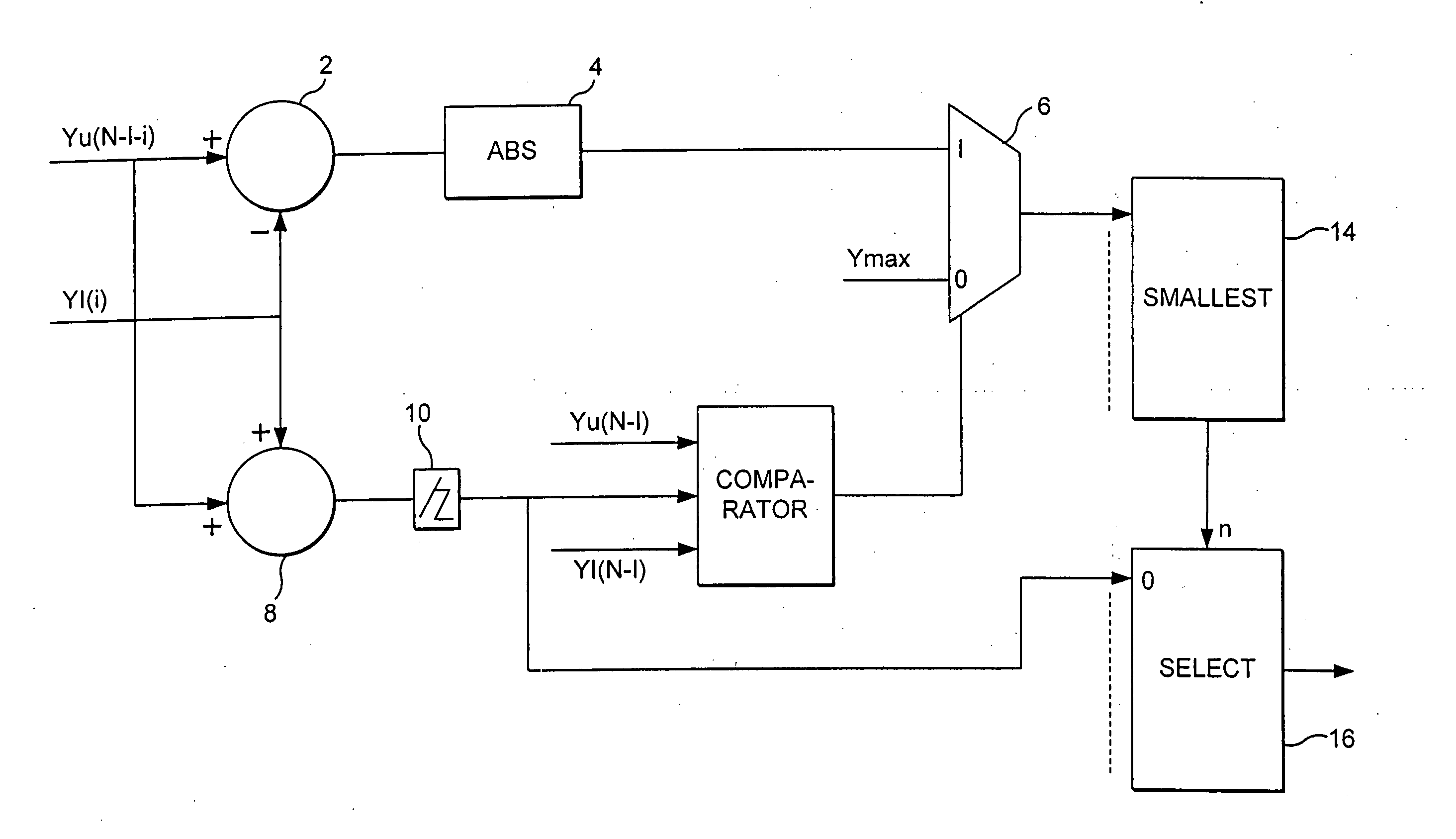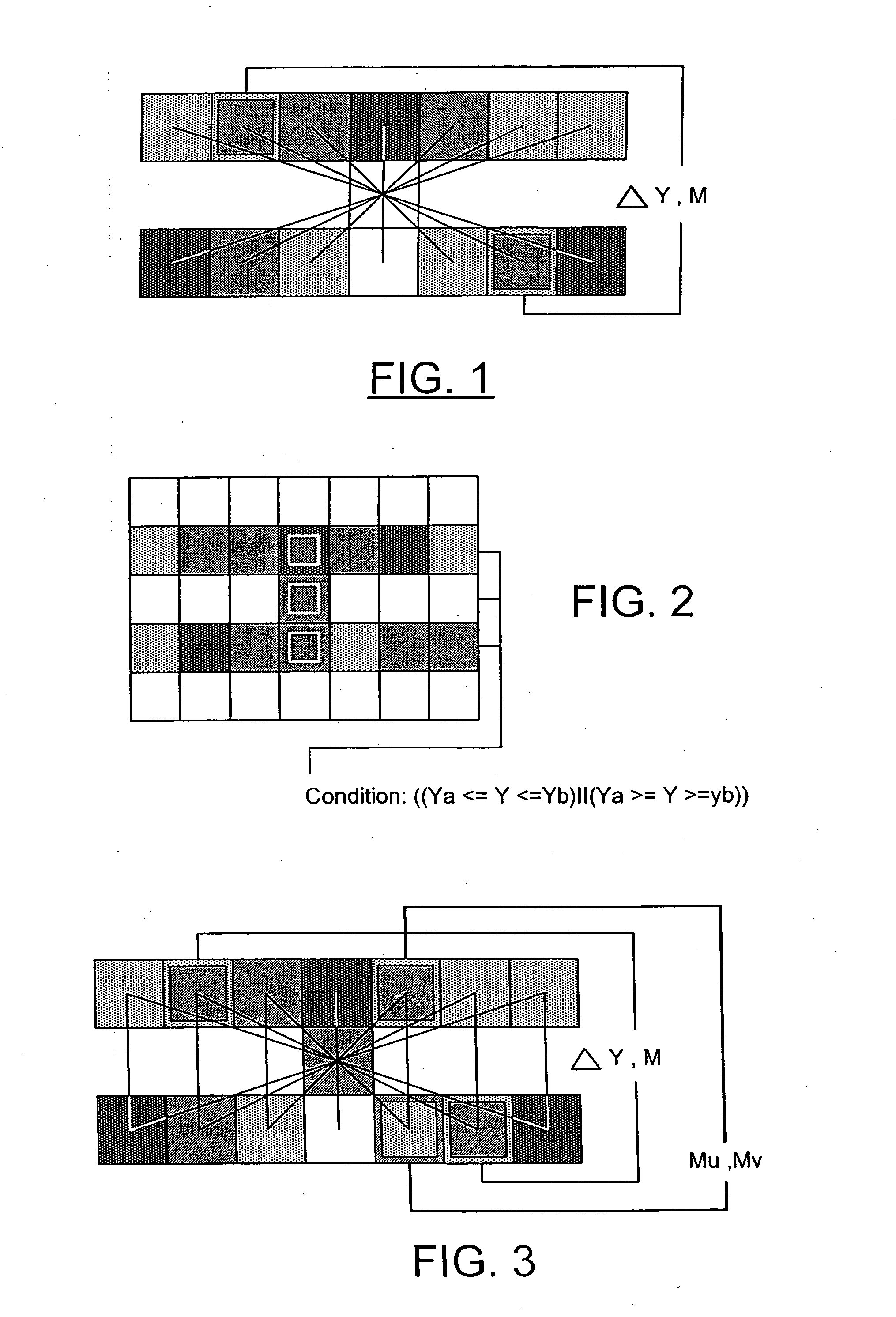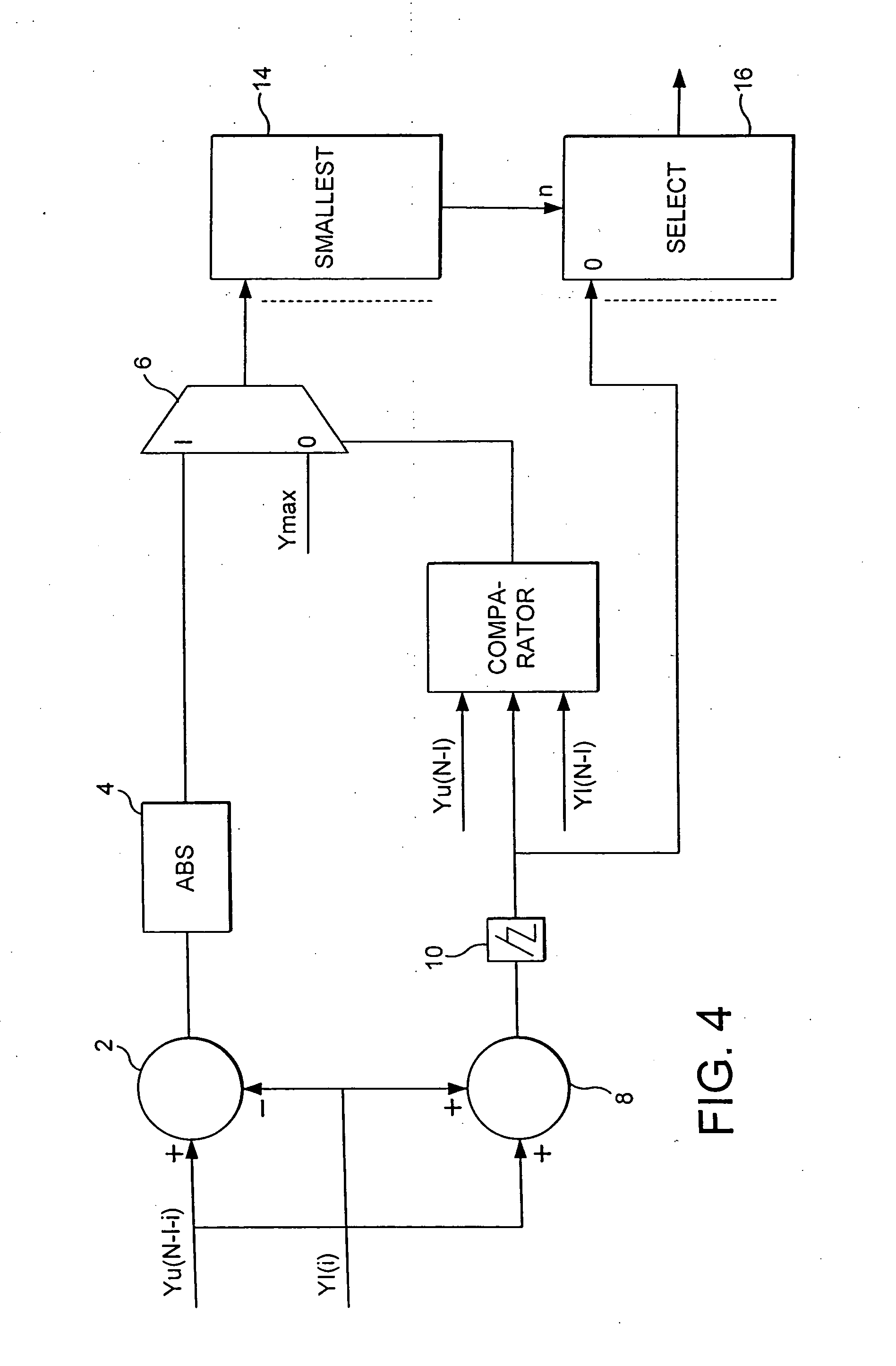De-interlacing of video data
a video data and interlace technology, applied in the field of deinterlacing video data, can solve the problems of high risk of generating noisy frames and ineffective use of sequence data from adjacent fields, and achieve the effect of reducing the amount of artefacts related
- Summary
- Abstract
- Description
- Claims
- Application Information
AI Technical Summary
Benefits of technology
Problems solved by technology
Method used
Image
Examples
Embodiment Construction
FIG. 1 shows how pixels are selected to compute the averages and differences between pixels in a single frame. The differences and the averages are computed along the imaginary lines connecting two pixels symmetrically opposite with respect to the pixels to be reconstructed. Every average is tested against the values of the pixels above and below the pixels to be reconstructed as shown in FIG. 1 and only the ones passing the test are subject to further processing. When the set of vertically correlated averages have been fully populated, the one corresponding to the best match for the pixels to be reconstructed is selected.
The procedure is performed as follows:
Stage a.
With reference to the FIG. 1, differences in colour (RGB model) between pairs of pixels coupled by the imaginary lines are computed. These pixels both come from the same field in an interlaced image.
Dk=((Pi.R−Pj.R)*(Pi.R−Pj.R)+(Pi.G−Pj.G)*(Pi.G−Pj.G)+(Pi.B−Pj.B)*(Pi.B−Pj.B)).
Where Dk is the k-difference (among ...
PUM
 Login to View More
Login to View More Abstract
Description
Claims
Application Information
 Login to View More
Login to View More - R&D
- Intellectual Property
- Life Sciences
- Materials
- Tech Scout
- Unparalleled Data Quality
- Higher Quality Content
- 60% Fewer Hallucinations
Browse by: Latest US Patents, China's latest patents, Technical Efficacy Thesaurus, Application Domain, Technology Topic, Popular Technical Reports.
© 2025 PatSnap. All rights reserved.Legal|Privacy policy|Modern Slavery Act Transparency Statement|Sitemap|About US| Contact US: help@patsnap.com



